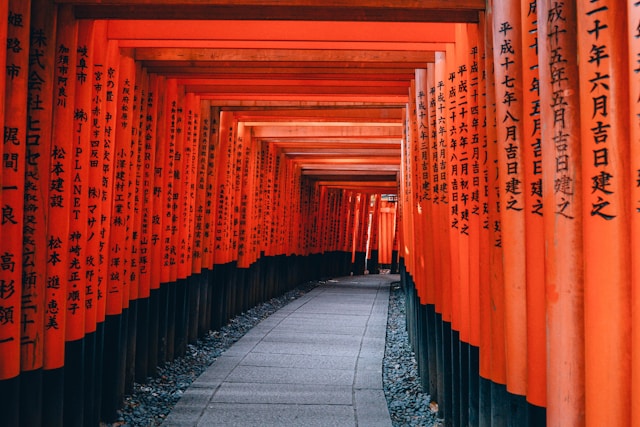Japan is a country of contrasts, where ancient traditions blend seamlessly with cutting-edge technology, and where natural beauty changes dramatically with the seasons. Choosing the best time to visit Japan depends on what you want to experience. Whether it’s the cherry blossoms in spring, the vibrant autumn leaves, or the peaceful winter landscapes, Japan offers something special all year round.
Spring: The Magic of Cherry Blossoms
Spring, particularly late March to early April, is one of the most popular times to visit Japan. The country comes alive with the blooming of cherry blossoms, or “sakura,” creating a breathtaking sight in parks, temples, and along city streets.
Highlights of Spring
- Cherry Blossom Viewing (Hanami): This traditional practice involves picnicking under blooming cherry trees. Popular spots include Ueno Park in Tokyo and Maruyama Park in Kyoto.
- Festivals: Spring also hosts various festivals, such as the Takayama Spring Festival, known for its ornate floats and vibrant atmosphere.
Considerations for Spring Travel
While spring is beautiful, it’s also one of the busiest tourist seasons. Be prepared for crowds, especially in popular cherry blossom spots.
Summer: Vibrant Festivals and Lush Landscapes
Summer in Japan, from June to August, brings warm weather, lush greenery, and a festive atmosphere. It’s a time when the countryside is at its most vibrant, and numerous festivals take place across the country.
Highlights of Summer
- Matsuri (Festivals): Summer is festival season in Japan, with events like the Gion Matsuri in Kyoto and the Nebuta Matsuri in Aomori drawing large crowds.
- Hiking: The warmer months are perfect for outdoor activities. Hiking trails, such as those in the Japanese Alps or around Mount Fuji, are popular.
- Beaches: Japan’s beaches, particularly in Okinawa, are ideal for relaxation and water sports.
Considerations for Summer Travel
Summer in Japan can be hot and humid, especially in the cities. Additionally, this season coincides with the rainy season (June to mid-July) and the possibility of typhoons later in the summer.
Autumn: The Splendor of Fall Foliage
Autumn, from September to November, is another spectacular time to visit Japan. The country is bathed in vibrant hues of red, orange, and yellow as the leaves change color, providing stunning backdrops for sightseeing.
Highlights of Autumn
- Koyo (Autumn Leaves): Much like cherry blossom viewing, autumn leaf viewing is a cherished tradition in Japan. Famous spots include Kyoto’s Arashiyama and the temples of Nikko.
- Cultural Events: Autumn is also a season for cultural appreciation, with tea ceremonies, ikebana (flower arranging), and other traditional arts in full display.
Considerations for Autumn Travel
Autumn is generally less crowded than spring but still popular, so it’s wise to book accommodations and transportation in advance.
Winter: A Serene and Snowy Wonderland
Winter in Japan, from December to February, offers a different kind of beauty. The country’s northern regions and mountainous areas are transformed into snowy wonderlands, perfect for winter sports and experiencing Japan’s unique cold-weather culture.
Highlights of Winter
- Skiing and Snowboarding: Japan is renowned for its ski resorts, particularly in Hokkaido and the Japanese Alps, offering some of the best powder snow in the world.
- Onsen (Hot Springs): There’s nothing quite like soaking in a steaming onsen while surrounded by snow. Popular onsen towns include Hakone and Yufuin.
- Festivals and Lights: Winter is also the season for illuminations and festivals, such as the Sapporo Snow Festival, where massive snow sculptures are displayed.
Considerations for Winter Travel
Winter travel in Japan can be cold, especially in the north. However, the trade-off is fewer crowds and the opportunity to experience Japan’s winter culture.
Conclusion: Choosing the Right Season for Your Trip
The best time to travel to Japan depends on what you want to experience. Spring and autumn are ideal for enjoying Japan’s natural beauty and cultural festivals, while summer is perfect for outdoor adventures and lively festivals. Winter, though cold, offers serene landscapes and unique experiences like skiing and hot springs. Each season has its charm, making Japan a year-round destination with something special to offer every traveler.

